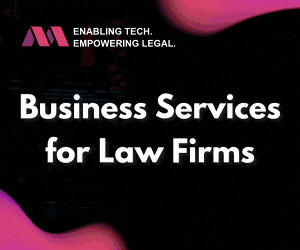Client listening has traditionally taken a project-based approach to feedback, driven by annual research projects. While research is a valuable piece of the puzzle, it’s far from the whole picture. To overcome the perils of project-based feedback, firms are making the move to always-on client listening.
Have your efforts to expand client feedback ever been thwarted by “but I know my clients” or “but it’s not the right time to ask them for feedback”? The problem with project-based feedback is that it creates blindspots. It’s hard to get everyone involved, and the results only tell a small part of the story.
If Mark Twain were alive today, he’d be in your corner, championing the adoption of an always-on approach to client listening. Why? Because over 100 years ago, he could see the blindspots that still plague professional services firms today.
It’s what you know for sure that just ain’t so (that gets you into trouble)
Mark Twain famously said “It ain’t what you don’t know that gets you into trouble. It’s what you know for sure that just ain’t so.”
What’s he getting at? Our human tendency to believe that we have facts, when they’re really just opinions and assumptions. When we make decisions based on “facts”, that turn out to be false assumptions, things can go badly wrong.
Overcoming “I know my clients”
Every day, firms are faced with decisions about client delivery, pursuits, brand, product development, talent management and more. While the intention is to make evidence-based decisions, the relevant insights are often missing or out of date.
Rather than acknowledging the lack of evidence, firms get lost in the murky world of assumptions and opinions that masquerade as facts. Ask directory researchers and independent client listeners and they’ll tell you that “I know my clients” and “it’s not the right time” are red flags for evidence-based decision-making.
When clients are asked questions from the perspective of curiosity rather than confirmation, they tell a broader story. They talk about wider needs and priorities, evolving expectations and the little frustrations that don’t exist with other firms they use. There’s a reason teachers don’t let pupils mark all their own homework!
When someone says “I know my clients” on many levels they’re right. They no doubt have a good understanding of what that person likes, the priorities of their business and how to provide advice and technical support to them.
But it doesn’t mean they’re asking them the right questions about their broader needs, expectations or experiences. It also doesn’t mean the client is telling them everything they need to know to make the future relationship stronger or more profitable.
We humans all have blindspots. We see the world, ask questions and judge responses from our own perspective. We ask questions based on what we already think to be true. For subject-matter experts, it’s hard to ask questions you don’t know the answers to.
We confuse strong beliefs with facts, and then get frustrated by people who have opposing beliefs/facts. It’s part of being human, but that doesn’t mean firms need to make decisions the same way.
Reducing blindspots
A firm can’t afford to be the sum total of its people’s blindspots. Assuming that the way it’s always been done is still the best way, is the road to competitive disadvantage. I suspect a lot of people at Blackberry, Yahoo and Segway spent too long looking at their growing customer base through the wrong lens.
So what’s the alternative? Instead of having individuals looking for feedback that supports their “facts”, firms need to continuously gather data that qualifies assumptions, fills knowledge gaps and gives decision-makers a broader context.
This is easier said than done, when you see client listening only through a research lens. Research remains a valuable piece of the puzzle. But it’s not the whole picture. It’s just a good stepping stone on the path to always-on client listening.
The implications of project-based feedback
While your client listening remains selective or project-based, you miss the opportunities to fill the insight gaps and remove assumptions.
- It’s a point in time – project-based feedback gives you a point in time snapshot. Sometimes this is all you need, but if you’re trying to track trends and emerging needs, it’s like watching every 5th episode of a Netflix drama but without seeing the recap at the beginning.
- It’s selective – project-based feedback encourages an ‘opt-in’ culture where partners decide whether it’s the “right time” for a client to be asked for feedback. This makes the results biassed towards happy clients – which is great for gathering testimonials, not so good for learning about how clients experience the firm.
- It’s a narrow view – many client voices don’t fit neatly into a survey or interview. Complaints, reviews, directories, direct emails, casual conversations, business announcements, tender documents, revenue changes, billing history… the list is long. All this data can help you make a more informed decision about how to win bids, strengthen relationships, communicate your brand and develop new products.
The alternative approach – always-on client listening
To discover “what you know that just ain’t so”, firms can embrace always-on client listening. This approach begins with the end in mind by asking “what do we need to know”, rather than “what do we want to ask”. Firms identify the actionable insights that decision-makers need to make agile and evidence-based decisions, and then work backwards to discover the data they need to collect.
For example:
- What do we need to know to win more bids, and who needs these insights when?
- What do we need to know to help us differentiate our brand amongst our referrers or target accounts, and who needs these insights when?
- What do we need to know to develop a market-leading key account strategy, and who needs these insights when?
- What do we need to know to deliver a fast and stress-free onboarding process for clients, and who needs these insights when?
- What do we need to know to discover emerging client/market needs before our competitors, and who needs these insights when?
Once you know who needs to know what, and when, you can then set about creating a 365 days a year client listening programme that’s focused on getting the right insights to the right people at the right time.
Is always-on client listening for everybody?
No. It’s for the people and firms that want to listen differently. They want to hear what their clients, people and market are saying now. They’re constantly looking to shine a light on their blindspots, so that they can discover and respond to client needs faster.



